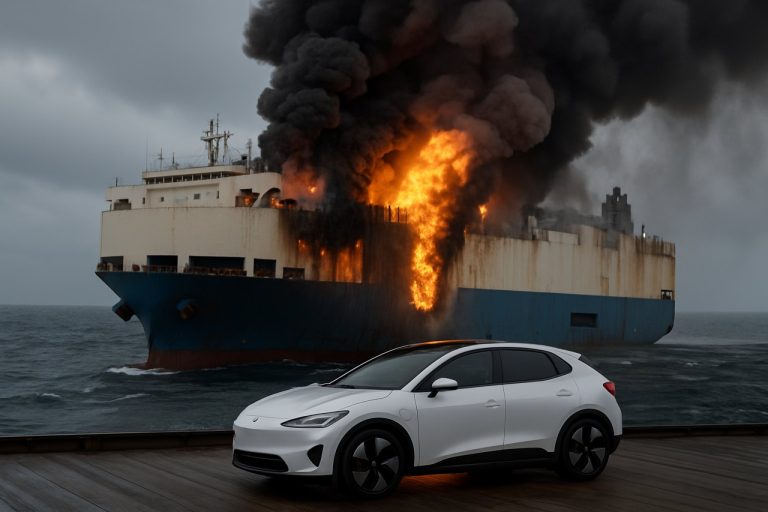
Shipping Safety Nightmare: E-Vehicles Push Maritime Fire Risks to Record Highs in 2025
Allianz warns of surging fire incidents on vessels, as electric vehicles and energy storage systems complicate shipping safety in 2025.
- 20% increase in vessel fire incidents year-over-year
- 30% of ship fires happen on container, cargo, or Ro-Ro carriers
- 3,000 vehicles: Morning Midas car carrier cargo count
- 10,000 EVs: Capacity of the largest car carriers today
A towering plume of smoke billowing from the Morning Midas in the North Pacific is just the latest warning: Relentless shipping fires are threatening global trade, as new electric and hybrid vehicles pack more risk onto the world’s biggest ships.
Allianz Commercial’s 2025 report draws a stark picture. Despite stricter rules in the pipeline, shipboard fires are spiking—reaching a decade-high of 250 incidents last year alone. That’s a 20% jump, driven in part by the surging transport of electric vehicles (EVs) and battery energy storage systems (BESS), said Captain Rahul Khanna, Global Head of Marine Risk Consulting.
Why Are Shipboard Fires Getting Worse in 2025?
The rise of EVs is reshaping ocean logistics, but not always for the better. Lithium-ion batteries, now packed by the thousands onto massive car carriers, pose unique and volatile fire risks. Even with improved stability in modern batteries, the energy density means any fire can become catastrophic at sea—endangering crews, cargo, and even the environment.
According to Allianz, fires are now the fourth most common cause of shipping incidents worldwide. The report spotlights a key statistic: about 30% of these fires plague container ships, general cargo carriers, or roll-on/roll-off (Ro-Ro) vessels—the exact types moving the new generation of vehicles and battery systems.
Q: What Happened on the Morning Midas?
On June 3rd, disaster struck. Fire tore through the Morning Midas, carrying about 3,000 vehicles, including 800 electric and hybrid cars. Twenty-two seafarers escaped via lifeboat, underscoring the ongoing threat to global crews—even as ships operate with fewer hands on deck.
As car carriers grow, so does the danger. Industry insiders point out that today’s largest vessels haul up to 10,000 EVs on a single voyage. That’s not just a staggering chunk of value—it’s an enormous latent fire risk floating across the oceans.
How Can Shipping Companies Fight the Growing Fire Threat?
- Upgrade fire detection and suppression systems to meet the new energy realities.
- Enhance container and cargo hold design for better isolation and emergency access.
- Train crews extensively in lithium-ion and BESS firefighting tactics.
- Pursue stronger collaboration between insurers, vessel owners, and international regulators for smarter risk management.
Allianz Commercial says it is raising the bar for insurance risk controls, working directly with clients to address the mounting threats. The insurer urges shipping companies to act fast—because regulatory fixes are coming slowly, and the risks are multiplying.
Get the latest on shipping industry developments from gCaptain or explore global insurance safety trends at Allianz and maritime authorities like IMO.
Your Questions Answered: Shipping Fires & EVs
Q: Why are EV fires so hard to control at sea?
Because lithium-ion batteries can cause thermal runaway—spreading rapidly and reigniting despite suppression efforts.
Q: Can future ship designs solve the problem?
Advanced designs with better firewalls, cooling, and detection tech are coming, but retrofitting old ships is slow and expensive.
Q: Should we expect more shipping fires in 2025?
Without urgent industry action, incidents are expected to keep rising as the global EV market booms.
Take Action: Protect Crews, Cargo & Shipping Giants
Don’t wait for the next headline-grabbing disaster. Stay informed, demand change, and ensure your company—or your cargo—isn’t next.
- Review crew training on new fire risks
- Audit your ship’s fire detection and suppression systems
- Check compliance with evolving international standards
- Monitor insurer updates and risk guidelines frequently



